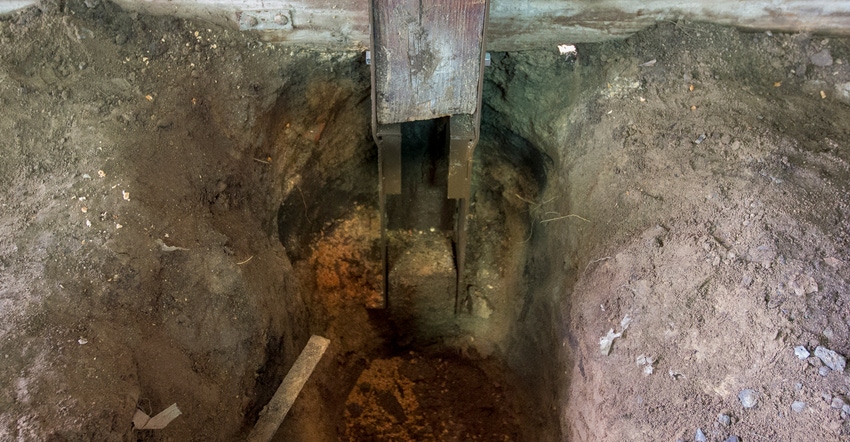
You’ve got an older post-frame building, and you’ve heard stories about posts rotting at ground level. You walk by the building frequently and never notice any problems. Then one windy day, you see the siding moving in one spot. How could that be?
“The industry standard for constructing frame buildings was once 6-inch-by-6-inch treated posts,” explains Dan Nyberg, sales trainer for Morton Buildings. “No matter who built your building, if you have that type of construction, you need to thoroughly inspect each post.”
Nyberg suggests taking a screwdriver aimed at a 45-degree angle and poking into the post 3 inches below the soil line. You hope the screwdriver runs into solid wood. Instead, you might feel some resistance at the outer shell before the screwdriver pokes through into a hollow center. If the screwdriver penetrates more than 1 inch, you have a rotted post needing repair.
The problem has developed because the girth of the 6-by-6-inch posts didn’t allow treatment material to penetrate completely. Many posts also contained moisture and dried out over time.
“That’s why laminated posts made of 2-inch-by-6-inch boards are the industry standard today,” Nyberg says. “The 2-inch-by-6-inch individual boards are treated before they’re laminated.”
Nyberg says Morton Buildings understands the importance of repairing and restoring older buildings. It operates a service division in many locations that offers solutions to extend the life of farm buildings.
Whether it’s a Morton building or not, Morton repair specialists can evaluate structures, suggest repairs and make estimates. Contact your closest Morton Construction Center.
Is building as sound as you think?
Evaluating an older building breaks down into three categories, Nyberg says. Here’s a closer look:
Functional use. The 6-by-6-inch post example falls under evaluating structural functionality of an existing building. “If it was built with round poles, many of them may rot off near ground level,” Nyberg says.
One option is to dig a 4- or 5-foot hole where the post is underground, attach brackets to the post extending into the hole, and fill the hole with concrete, making sure the bottom of the hole is below the frost line.
Another option, Nyberg says, is to use commercially available concrete lower columns instead of pouring concrete. Then non-rotten upper poles or posts attach to the lower concrete column, and concrete is poured into the hole to support the structure.
Other functional concerns could include diagnosing and fixing leaky roofs and determining why sliding doors are now hard to push. Perhaps the trolley and/or track needs adjusting or replacing.
Cosmetic issues. “Maybe the door still works fine, but the door jam where it closes has taken a beating over time,” Nyberg says. “Or maybe a piece of metal is pulling away from the frame. Eventually, wood underneath can rot if it isn’t addressed.”
You may also just want to update the color on an existing building to match newer buildings.
Normal upkeep and maintenance. Suppose your building was installed with weather stripping around the doors, but the building is 20 years old. “Chances are that weather stripping is no longer functioning to keep air out, and needs replacing,” Nyberg says.
He notes that some farmers may want to tackle chores like these themselves, while others may prefer some help.
About the Author(s)
You May Also Like




